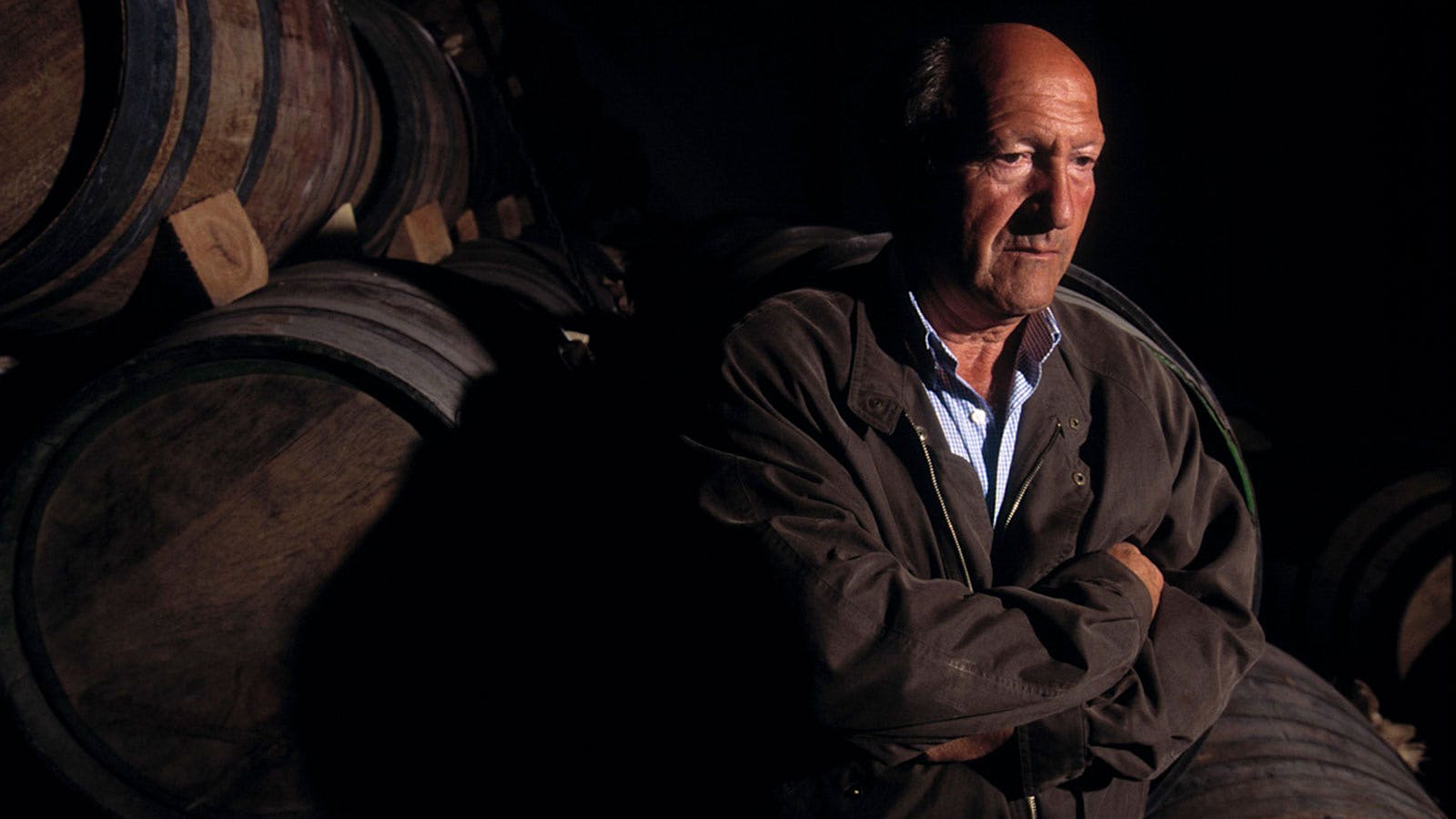Alejandro Fernandez, who revolutionized Spain’s Ribera del Duero region with his determination and his iconic wine, Pesquera, died May 22 in Santander. He was 88.
“The passing of our friend and mentor Alejandro Fernández is also the passing of an era bridging the past to the future,” said Steve Metzler and Almudena de Llaguno, founders of Classical Wines import company. “Alejandro’s wines were so distinctive and inimitable that there could be no substitute, opening the eyes of the world not only to Ribera del Duero, but to the Tempranillo variety itself.”
Born in 1933, Fernandez quit school at 14 to work in farming. After a stint in the army, he became a carpenter and then a mechanic. He invented and produced tools to improve the cultivation of beets and other crops. His passion for wine grew, and in 1972, Fernandez borrowed money from his company to establish a winery, naming its wine after his home town, Pesquera.
With the help of Teófilo Reyes, an enologist who worked with the local wine cooperative, Fernandez realized his vision, planting grapes and establishing a new bodega in a 16th-century stone building. Together, Fernandez and Reyes produced Pesquera’s first commercial vintage in 1975.
Fernandez made Pesquera’s early vintages using an old stone lagar fermenting bin, an antique wooden vertical press and used American oak barrels. But already he had a goal of developing powerful, deeply concentrated wines from Tempranillo, known as Tinto del Pais in Ribera.
By the early 1980s, Pesquera had forced official Spanish wine organizations to pay attention to the region, and Ribera was granted official Denominación de Origen status in 1982. By the mid-1980s, the bodega was exporting wines to the United States and gaining attention, including a 1987 feature story in Wine Spectator.
Other vintners, encouraged by Pesquera’s success, began to create wines in a similar style; even Vega Sicilia took notes from Fernandez’s example, establishing a new winery called Alion to make the kind of rich reds that Pesquera had pioneered. “My ancestors made wines like these,” Fernandez told Wine Spectator in 1998. “I just make them better.”
Fernandez never rested on his laurels. He continued to buy and plant new vineyards, to invest in the best technology available and to refine his winemaking. In 1989, he began assembling vineyards for a new bodega in Ribera del Duero called Condado de Haza. In 1998, Fernandez looked outside the region for the first time, purchasing a property, Dehesa de la Granja, in Zamora. And while Reyes left Pesquera in 1994 to establish his own bodega, Fernandez’s daughters joined the company soon after, with daughter Eva Maria in charge of production at Pesquera.
Unfortunately, an ongoing legal battle over control of the family company, which pitted Fernandez and Eva Maria against his three eldest daughters and ex-wife Emilia Rivera Rueda, marred the last years of Fernandez’s life. But his legacy as a winemaking pioneer and steadfast champion of Ribera del Duero will live on.
Fernandez is survived by his four daughters, Olga, Maricruz, Lucia and Eva Maria, and several grandchildren.
Stay on top of important wine stories with Wine Spectator’s free Breaking News Alerts.
